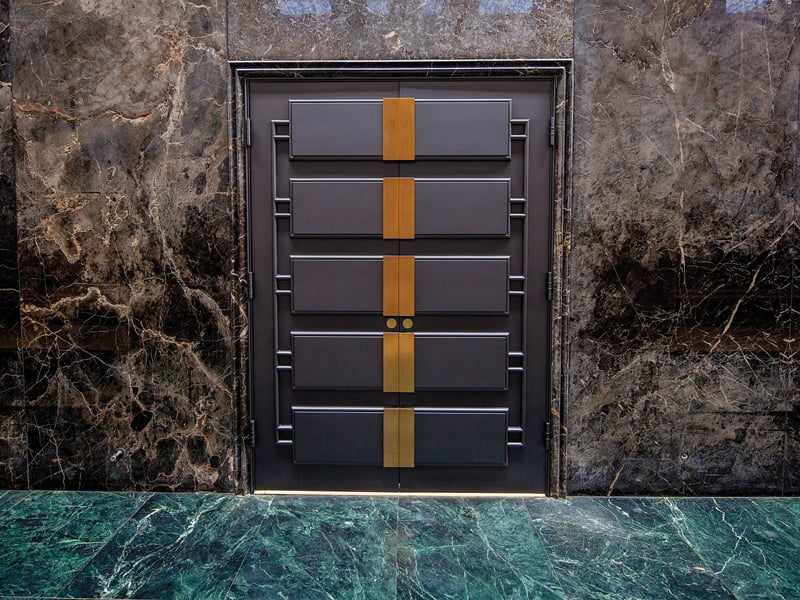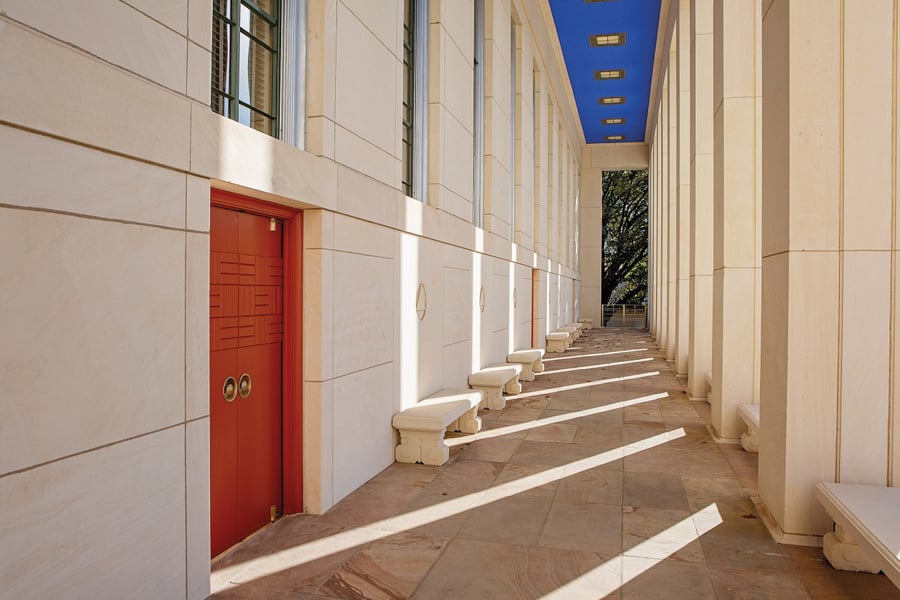
February 3, 2021
At Dallas’s Hall of State, a Return to Majesty
The Texas Art Deco gem was fastidiously restored by Gensler, which preserved ample Lone Star symbolism and winks from the original architect.
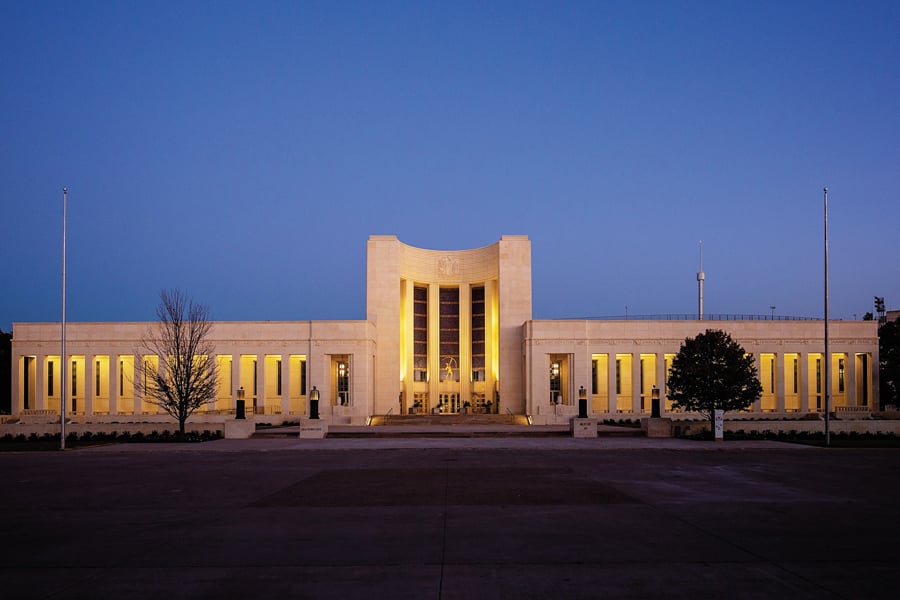
If you made a list of the most significant buildings in the mythology of Texas, the Hall of State in Dallas would rank right up at the top, alongside the Alamo, the state capitol, and—if you’re a sports fan—the Astrodome. Built for the 1936 exhibition celebrating the state’s centennial, it stands as the centerpiece of Fair Park, a 277-acre National Historic Landmark that boasts the most extensive assemblage of intact Art Moderne buildings in the United States.
The Hall of State was also, until last year, a wreck, its majestic halls crumbling from water damage and its once-bright facade of Texas stone shrouded in decades of accumulated grit and grime. One of its wings had been drafted into service as a storage container. These were just the beginning of its problems. A spreadsheet known as the “priority matrix” ran for pages on end.
That document was compiled by the Dallas office of Gensler, the architecture firm overseeing a $14.4 million restoration project, completed in December. The restoration has returned the building to its original glory, making it once again “a superb architectural monument to the past and present greatness of Texas,” as the front page of the Dallas Morning News declared upon its debut. That remains its principal function, serving as a ceremonial tourist destination and event space.
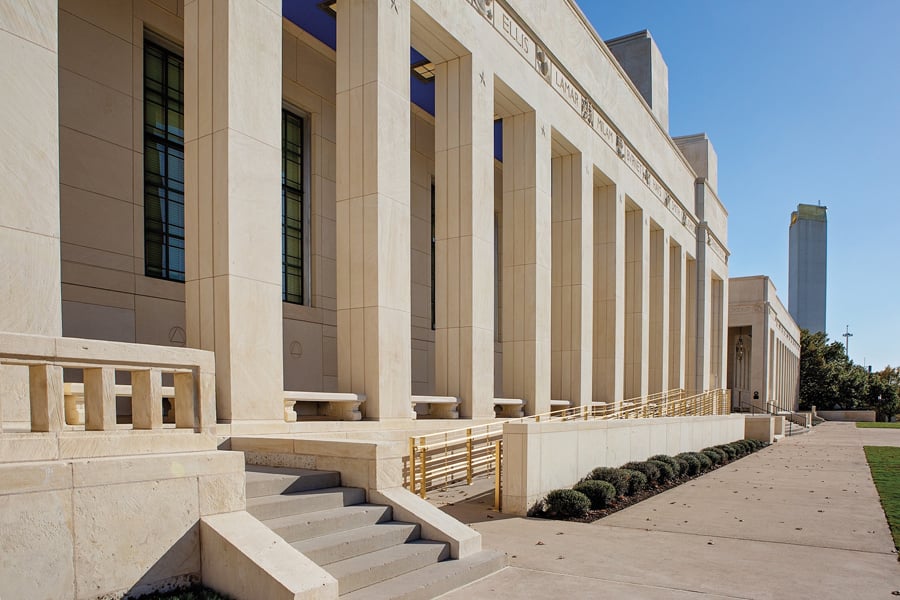
It is perhaps even more glorious, as it is now fully accessible to all, thanks to a subtly introduced entry ramp that runs along the northern wing of the front facade. “It’s a hidden feature that blends right into the landscape,” says Brian Nicodemus, the project manager and director of the work for Gensler. “Accessibility was not even a twinkle in anyone’s eye in 1936.”
Determining what exactly the original craftspeople were thinking was a persistent challenge. “Every day it was like showing up on an archaeological dig where something new was found and explored,” says historic preservation architect Felicia Santiago.
One such discovery: The interior spaces of the terrace behind the fronting colonnade had been painted a cool blue. “When we first looked at it, we were the first people to see that color in the colonnade in 80 years,” Santiago recalls.
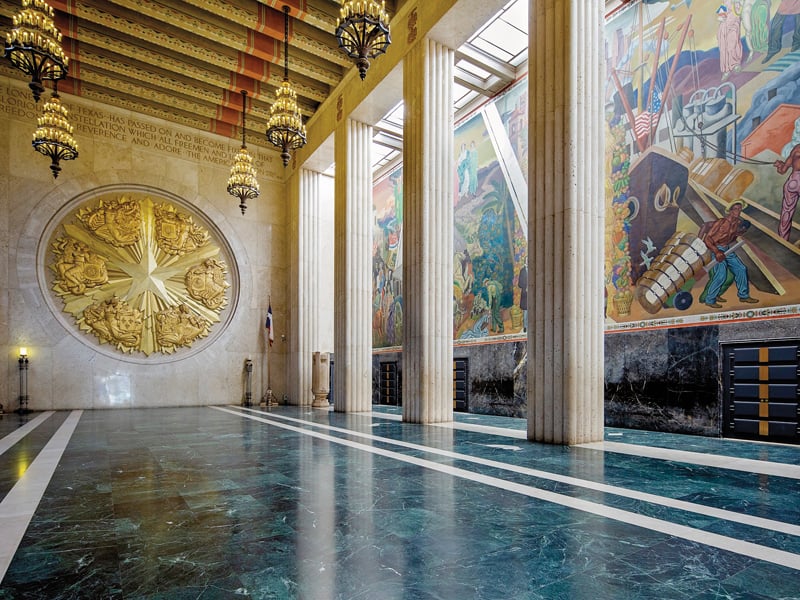
Much of the restoration work was done nearby in a former Ford automobile plant that is home to the factory facility of preservation specialist Michael van Enter. “He is a rock star,” says Nicodemus. Where auto workers once put together the Ford Fairlane, van Enter, a native of South Africa, carefully disassembled the ceremonial doors that fronted the hall so their armatures could be completely reconstructed.
Taking the doors apart also allowed for a cleaning that revealed their true beauty, with offsetting metals— brass, bronze—contrasting with Texas-themed details of longhorns, horse heads, rattlesnakes, and oil derricks.
Steel doors that lined the interior of the Great Hall of Texas, the ceremonial main room of the building, were also removed and thoroughly cleaned. The remade room, which culminates in a wall-size lone star in shining gold, is as magnificent as it must have been back in 1936.
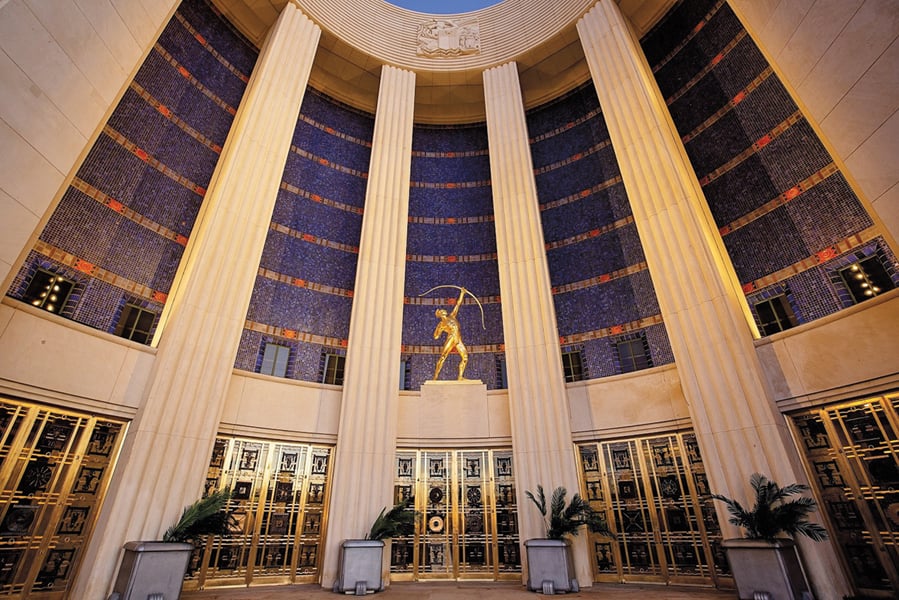
So too is the facade, which shines bright again, illuminating a hidden message in code that runs along the building’s decorative frieze. It was put there by the building’s architect Donald Barthelme—father of several noted authors—who had taken over the project mid-design and felt he was not given proper credit. His solution, the names of Texas heroes placed on the frieze, would be ordered so that their first letters spelled out his name.
Alas, he ran out of heroes with names beginning with E, so the trick only gets you to BARTHELM.
That was one item the restoration team did not try to fix.
You may also enjoy “KANVA Completes an Airy Redesign of Montreal’s Biodome”
Would you like to comment on this article? Send your thoughts to: [email protected]
Register here for Metropolis’s Think Tank Thursdays and hear what leading firms across North America are thinking and working on today.






